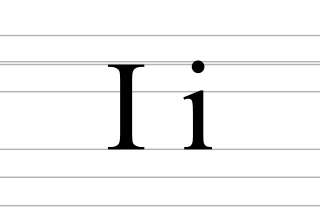Related Research Articles

A, or a, is the first letter and the first vowel letter of the Latin alphabet, used in the modern English alphabet, and others worldwide. Its name in English is a, plural aes.

The Arabic alphabet, or Arabic abjad, is the Arabic script as specifically codified for writing the Arabic language. It is written from right-to-left in a cursive style, and includes 28 letters, of which most have contextual letterforms. The Arabic alphabet is considered an abjad, with only consonants required to be written; due to its optional use of diacritics to notate vowels, it is considered an impure abjad.

The International Phonetic Alphabet (IPA) is an alphabetic system of phonetic notation based primarily on the Latin script. It was devised by the International Phonetic Association in the late 19th century as a standardized representation of speech sounds in written form. The IPA is used by lexicographers, foreign language students and teachers, linguists, speech–language pathologists, singers, actors, constructed language creators, and translators.

O, or o, is the fifteenth letter and the fourth vowel letter of the Latin alphabet, used in the modern English alphabet, the alphabets of other western European languages and others worldwide. Its name in English is o, plural oes.

Y, or y, is the twenty-fifth and penultimate letter of the Latin alphabet, used in the modern English alphabet, the alphabets of other western European languages and others worldwide. According to some authorities, it is the sixth vowel letter of the English alphabet. Its name in English is wye, plural wyes.
A phonetic algorithm is an algorithm for indexing of words by their pronunciation. Most phonetic algorithms were developed for English and are not useful for indexing words in other languages. Because English spelling varies significantly depending on multiple factors, such as the word's origin and usage over time and borrowings from other languages, phonetic algorithms necessarily take into account numerous rules and exceptions.
Metaphone is a phonetic algorithm, published by Lawrence Philips in 1990, for indexing words by their English pronunciation. It fundamentally improves on the Soundex algorithm by using information about variations and inconsistencies in English spelling and pronunciation to produce a more accurate encoding, which does a better job of matching words and names which sound similar. As with Soundex, similar-sounding words should share the same keys. Metaphone is available as a built-in operator in a number of systems.
The Thai script is the abugida used to write Thai, Southern Thai and many other languages spoken in Thailand. The Thai alphabet itself has 44 consonant symbols and 16 vowel symbols that combine into at least 32 vowel forms and four tone diacritics to create characters mostly representing syllables.
Malayalam script is a Brahmic script used commonly to write Malayalam, which is the principal language of Kerala, India, spoken by 45 million people in the world. It is a Dravidian language spoken in the Indian state of Kerala and the union territories of Lakshadweep and Puducherry by the Malayali people. It is one of the official scripts of the Indian Republic. Malayalam script is also widely used for writing Sanskrit texts in Kerala.

SQLite is a database engine written in the C programming language. It is not a standalone app; rather, it is a library that software developers embed in their apps. As such, it belongs to the family of embedded databases. It is the most widely deployed database engine, as it is used by several of the top web browsers, operating systems, mobile phones, and other embedded systems.
The Greek alphabet has been used to write the Greek language since the late 9th or early 8th century BC. It is derived from the earlier Phoenician alphabet, and was the earliest known alphabetic script to have distinct letters for vowels as well as consonants. In Archaic and early Classical times, the Greek alphabet existed in many local variants, but, by the end of the 4th century BC, the Euclidean alphabet, with 24 letters, ordered from alpha to omega, had become standard and it is this version that is still used for Greek writing today.
The following tables compare general and technical information for a number of relational database management systems. Please see the individual products' articles for further information. Unless otherwise specified in footnotes, comparisons are based on the stable versions without any add-ons, extensions or external programs.
Daitch–Mokotoff Soundex is a phonetic algorithm invented in 1985 by Jewish genealogists Gary Mokotoff and Randy Daitch. It is a refinement of the Russell and American Soundex algorithms designed to allow greater accuracy in matching of Slavic and Yiddish surnames with similar pronunciation but differences in spelling.
The New York State Identification and Intelligence System Phonetic Code, commonly known as NYSIIS, is a phonetic algorithm devised in 1970 as part of the New York State Identification and Intelligence System. It features an accuracy increase of 2.7% over the traditional Soundex algorithm.
Gary Mokotoff (born April 26, 1937) is an author, lecturer, and Jewish genealogy researcher. Mokotoff is the publisher of AVOTAYNU, the International Review of Jewish Genealogy, and is the former president of the International Association of Jewish Genealogical Societies (IAJGS). He is the creator of the JewishGen's Jewish Genealogical Family Finder and the Jewish Genealogical People Finder. He co-authored the Daitch–Mokotoff Soundex system. Mokotoff is co-author of Where We Once Walked: A Guide to the Jewish Communities Destroyed in the Holocaust.
The match rating approach (MRA) is a phonetic algorithm for indexing of words by their pronunciation developed by Western Airlines in 1977 for the indexation and comparison of homophonous names.
The Italian fiscal code, officially known in Italy as Codice fiscale, is the tax code in Italy, similar to a Social Security Number (SSN) in the United States or the National Insurance Number issued in the United Kingdom. It is an alphanumeric code of 16 characters. The code serves to unambiguously identify individuals irrespective of citizenship or residency status. Designed by and for the Italian tax office, it is now used for several other purposes, e.g. uniquely identifying individuals in the health system, or natural persons who act as parties in private contracts. The code is issued by the Italian tax office, the Agenzia delle Entrate.

I, or i, is the ninth letter and the third vowel letter of the Latin alphabet, used in the modern English alphabet, the alphabets of other western European languages and others worldwide. Its name in English is i, plural ies.
IPA numbers are a legacy system of coding the symbols of the International Phonetic Alphabet. They were the organizational basis for XSAMPA and the IPA Extensions block of Unicode.
Cologne phonetics is a phonetic algorithm which assigns to words a sequence of digits, the phonetic code. The aim of this procedure is that identical sounding words have the same code assigned to them. The algorithm can be used to perform a similarity search between words. For example, it is possible in a name list to find entries like "Meier" under different spellings such as "Maier", "Mayer", or "Mayr". The Cologne phonetics is related to the well known Soundex phonetic algorithm but is optimized to match the German language. The algorithm was published in 1969 by Hans Joachim Postel.
References
- 1 2 "The Soundex Indexing System". National Archives. National Archives and Records Administration. 30 May 2007. Archived from the original on 12 March 2020. Retrieved 24 December 2010.
- ↑ "Documentation: 9.1: fuzzystrmatch". PostgreSQL . Archived from the original on 23 July 2020. Retrieved 3 November 2012.
- ↑ "MySQL 5.5 Reference Manual :: 12.5 String Functions". MySQL. SOUNDEX(str). Archived from the original on 15 September 2016.
- ↑ "Built-In Scaler SQL Functions". SQLite. 16 July 2022. soundex(X). Archived from the original on 20 December 2022. Retrieved 24 December 2022.
- ↑ "SOUNDEX (Transact-SQL)". Microsoft Learn . 10 January 2010. Archived from the original on 23 October 2022. Retrieved 3 November 2012.
- ↑ "SOUNDEX". Database SQL Reference. Archived from the original on 21 October 2017. Retrieved 20 October 2017.
- ↑ "SOUNDEX". Functions for Working with Strings.
- ↑ "SOUNDEX — Snowflake Documentation". docs.snowflake.com. Retrieved 2023-01-16.
- ↑ "soundex". SAP Software Solutions. 28 May 2014. Archived from the original on 25 December 2022. Retrieved 24 May 2021.
- ↑ "Phonetic Matching: A Better Soundex" . Retrieved 2012-11-03.
- ↑ Odell, Margaret King (1956). "The profit in records management". Systems. 20. New York: 20.
- ↑ USpatent 1261167,R. C. Russell,"(untitled)",issued 1918-04-02 (Archived)
- ↑ USpatent 1435663,R. C. Russell,"(untitled)",issued 1922-11-14 (Archived)
- ↑ Knuth, Donald E. (1973). The Art of Computer Programming: Volume 3, Sorting and Searching. Addison-Wesley. pp. 391–92. ISBN 978-0-201-03803-3. OCLC 39472999. Archived from the original on 2008-09-04. Retrieved 2010-09-17.
- ↑ CodingForums.com ()
- ↑ "MySQL :: MySQL 5.5 Reference Manual :: 12.5 String Functions - SOUNDEX". dev.mysql.com.
- ↑ Mokotoff, Gary (2007-09-08). "Soundexing and Genealogy" . Retrieved 2008-01-27.